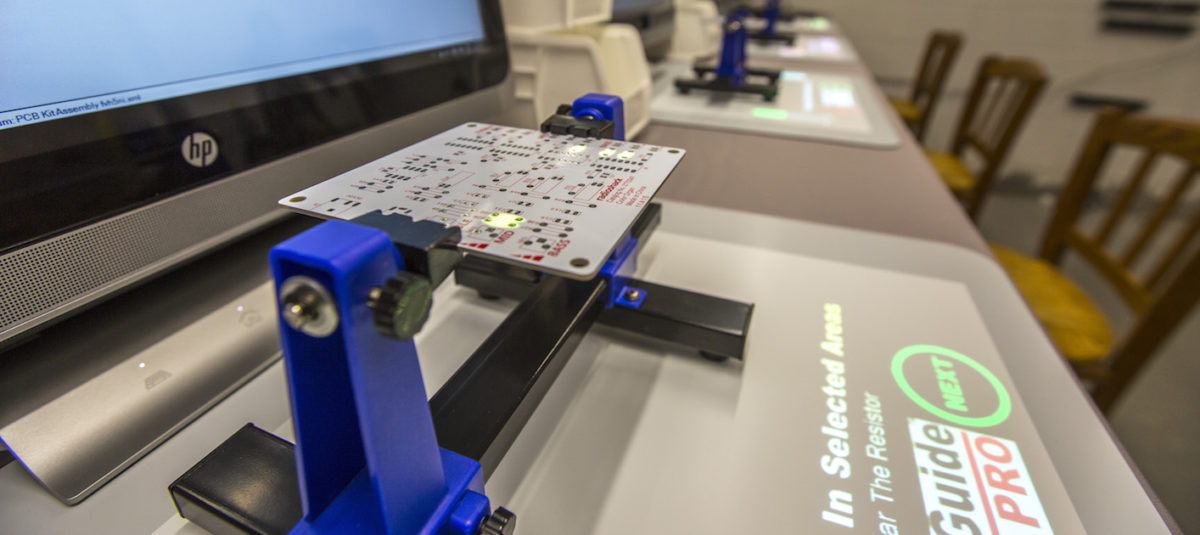
At a time when enterprise augmented reality is on the rise, manufacturing and technology companies are recognizing the power and potential of this transformative tech paradigm. A recent Business Insider article explains that it’s more than just “the next big thing,” and has already dramatically changed the way big companies do business.
Here at OPS Solutions, we’re experiencing this shift firsthand and have long been at the forefront of the augmented reality revolution. We’ve been designing, developing and deploying innovative augmented reality systems since 2005. Our original patent for LightGuide Systems (LGS) technology was the codification of a true foundational breakthrough—a milestone in augmented reality solutions.
That patent opened the door to what has become a continuing series of increasingly powerful, refined and transformative augmented reality applications. Manufacturing facilities and technology pioneers around the world have utilized our patented projector-based augmented reality innovations to create extraordinary parts and products.
A great leap forward
Today, our clients and professional partners are celebrating the next great leap forward, as the arc of augmented reality innovation once again bends sharply upward. We are thrilled to announce that we have been granted a second patent, the result of a year-long certification and review process.
This new OPS patent protects the proprietary technology we have developed that facilitates streamlined integration between enterprise augmented reality platforms and external data sources. This exciting technology makes it possible to modify training and production processes dynamically and in real time. Remote functionality makes it possible to not only implement those changes from off-site, but also to gather detailed digital data about parts, processes and production.
Tech companies and manufacturers can utilize the technology described in this patent to achieve formerly unthinkable levels of adaptive and efficient operational flexibility. This breakthrough technology accommodates an extraordinarily wide range of Manufacturing Execution System (MES) interfaces, from simple TCP connections to plant servers to downloading and interpreting massive amounts of complex and sophisticated build data.
A tight feedback loop
One of the things that truly sets this new patent apart is the fact that it was conceived from real-world client feedback, and over a decade of our own observations gleaned from developing augmented reality technology.
We have been working closely with our clients and their data systems in real-world production environments, allowing ample opportunity to modify, refine, and add new functionality to an already powerful solution.
This extremely tight feedback loop has helped make our industry-leading augmented reality technology even more flexible, leading to faster setup and launch times, and a host of improvements and enhancements to meet new and emerging needs.
Molded by experience
One of the biggest reasons why that process has catapulted us to the forefront of the augment reality space, and why it holds such promise for continued expansion going forward, is that our leadership and development teams have extensive experience in manufacturing and technology environments.
We have lived and breathed these issues for quite literally decades, experiencing the frustration of challenges and the elation of innovation in plant floors, labs and research facilities.
That experience managing systems, operators and workflows allows us to approach augmented reality design and development from a uniquely practical and personal perspective. The tech architecture of this patent works because it has been developed in response to real-world needs by professionals who are intimately attuned to the demands of that world.
Our decision to apply for the patent was primarily motivated by our desire to be able to continue to innovate on behalf of our clients and professional partners. Essentially, filing for the patent more than three years ago has given us the legal, logistical and technical space to continue to innovate and drive this game-changing technology forward.
In other words, this patent isn’t the end, it’s the beginning. It’s an important milestone in the ongoing process of making increasingly powerful, accessible and dynamic augmented reality tools and technologies.

